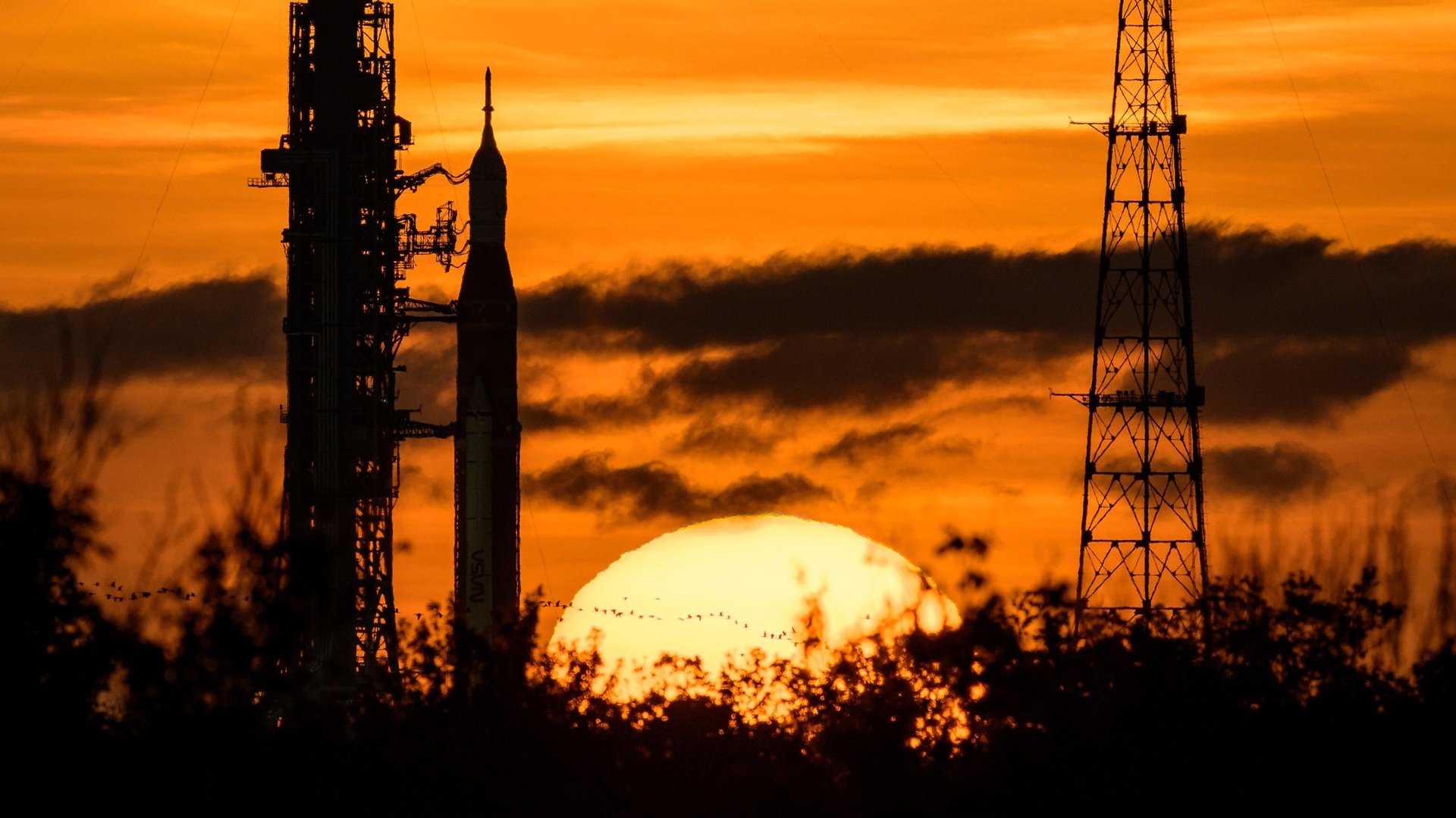NASA's risky new plan to launch its Moon rocket
Space engineers plan to deploy the power of physics.

The next attempt to launch NASA’s Artemis 1 test mission to the Moon will be on Sept. 3—if the agency is willing to take a risk with the incredibly expensive rocket sitting on the Kennedy Space Center launch pad.
The rocket missed its first chance to launch after one of its four main engines didn’t get cold enough. The rocket uses hydrogen and oxygen to propel it into space, stored as liquids at temperatures hundreds of degrees below freezing. If that superchilled propellant entered a too-warm engine, the thermal stress might lead it to crack and fail.
After a day poring over data from sensors all over the Space Launch System rocket, the rocket’s manager, John Honeycutt, and the launch director, Charlie Blackwell-Thompson, said they suspected a faulty sensor rather than a real problem with the engine itself. They couldn’t find anything different about the engine that didn’t reach the correct temperature.
The plan for the next attempt is to re-load the rocket with propellant for a potential flight, but start the engine chilling procedure sooner. That could give more time for the engines to reach the right temperature or the sensor to detect them.
But if the sensor is in fact flawed, the team is likely to face the same situation it did last time: A disagreement between different data sources.
NASA’s plan to deal with a dodgy temperature gauge
Why not just replace the sensor? That would require rolling the rocket back to its enormous hangar several miles away and opening up the engine to replace it, then rolling it back out to the pad. That could several days or weeks, a potentially costly delay in an already late program.
Instead, NASA engineers are working feverishly to figure out if other sensors, like the temperature measure where liquid hydrogen fuel flows into the rocket or pressure sensors within the engine, can give them enough insight to be confident that the engines are in fact cold enough to launch.
“The physics of how hydrogen performs [and] the way the sensor is behaving doesn’t line up,” Honeycutt said. “We will be looking at all the other data that we have and use it to make an informed decision.”
Honeycutt also told reporters that none of the four engines had actually reached the goal temperature of -420° F; the three engines that weren’t seen as problematic were only at -410°F. While that difference might not seem like much, the margins of safety are very small when dealing with the forces generated by this rocket: Internal pressure can exceed 7,000 lbs per square inch. By starting earlier, all four engines have a chance to reach their operational state.
NASA officials could still decide that they don’t have enough data and instead roll back and open up the engine. But the team is under significant pressure to demonstrate to the public and to Congress that this rocket can take humans to the Moon more safely than other alternatives. At the same time, any launch failure would put the future of that lunar return at risk—the cost of roughly $4 billion per launch of SLS and its spacecraft, Orion, could mean years before the next test.
